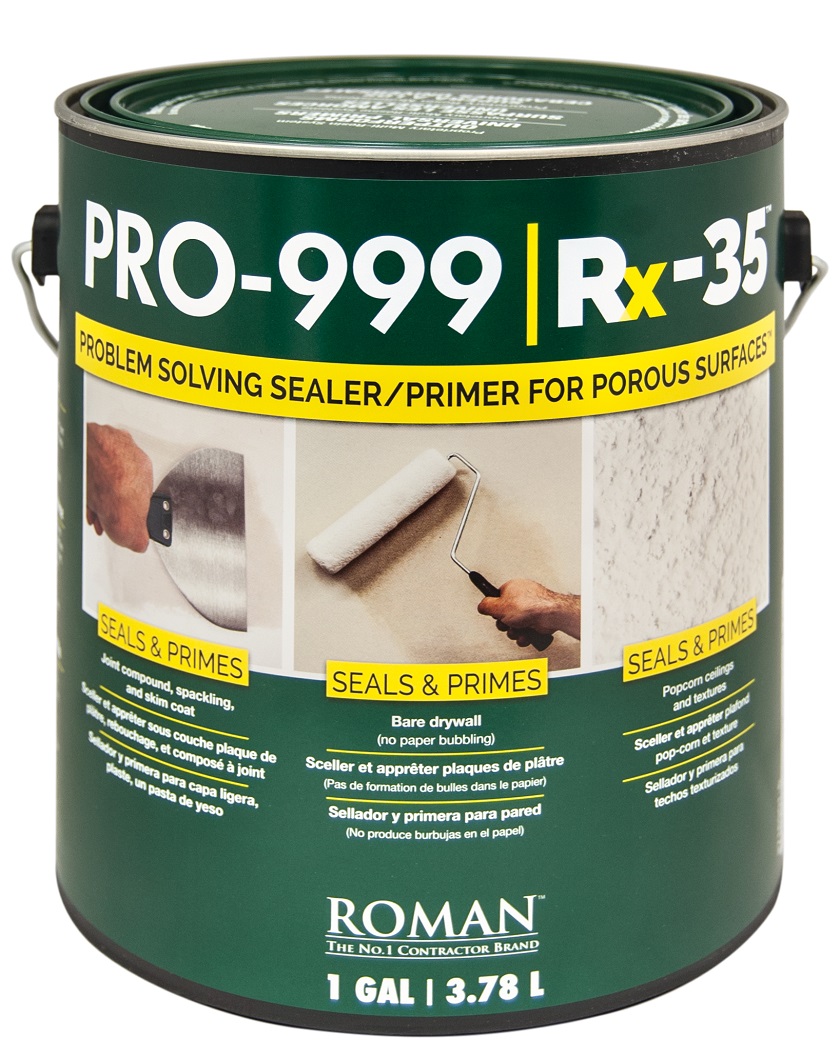The Purpose of Wallpaper Primer

Primer should always be added to bare or painted walls prior to wallpaper, borders or murals for best results. It’s a crucial additional step that is often skipped by homeowners and installers alike.
Homeowners skip this step because they typically don’t know it needs to be done and cheaper installers skip this step to save time. However, adding primer cuts down on air bubbles, makes the wallpaper easy to hang and later, most importantly, makes it easy to come down.
What Wallpaper Primer Does?
The purpose of wallpaper primer is relatively simple – it creates a barrier between your drywall and the wallpaper. You want the wallpaper to adhere to the thin coat of primer and not your drywall. If a wall has been painted, a primer can make it so the wallpaper is less likely to roll or have issues.
Primer also serves to hide color. When you stand back and look at your beautiful new wallpaper, you probably do not want to see a dark purple paint as part of the undertone.
A primed wall makes it easier for the wallpaper to be positioned on the wall because it slides better (one of the reasons installers don’t particularly like peel and stick). Trying to position sheets of paper on bare textured drywall is not ideal and can result in air bubbles the following day.
Primers also make it easier for you to remove the wallpaper. Since you are pretty much focused on applying (not removing) wallpaper, this may seem like an unnecessary concern. However, if you plan to own that home for the rest of your life, it is something you should definitely consider. And if you’re not, consider the next person who buys the house. Bare walls should not be layered with wallpaper, so consider what will happen in five or ten years when you want to give the room a new look. Pieces of drywall will come down with the wallpaper if they were not primed.
Also, keep in mind that you may need to remove the wallpaper if the job was not done well. It could be a matter of days, not years, and you do not want to damage your walls in the process.
When You Need To Prime Your Walls?
Primer is always a good idea, but you should follow the directions on the primer specified on the wallpaper roll. Even if your wall has a layer of latex paint on it, you need primer. Additionally, you will need primer if your wallpaper has pre-adhesive on it because the latex will soften under the paste. The end result is that the surface is not able to hold the wallpaper properly because it lacks a hard surface.
Primer prevents latex paints from softening under the paste. When the paste is applied, it sticks only to the primer, not the paint (or in the worst-case scenario, the sheetrock behind the paint). If you ever apply wallpaper onto a latex paint, then you could end up tearing the sheetrock when you have to remove the paper.
Pre-coats are not the same thing as primer. They are primarily desired for a different kind of surface, such as glass or Formica – not painted walls. If your wall has a common latex paint, then you will likely need a primer.
- September - 2023
- November - 2022
- November - 2021
- June - 2021
- March - 2021
- February - 2021
- January - 2021
- November - 2020
- October - 2020
- June - 2020
- May - 2020
- October - 2019
- June - 2019
-
May - 2019
- What Is The Best Wallpaper Paste?
- Can You Paint Over Wallpaper?
- Is It Hard To Remove Wallpaper?
- Wallpaper vs. Paint: Which Is Better?
- What Is Vinyl Wallpaper?
- Does Wallpaper Have Asbestos?
- Is Wallpaper Waterproof?
- Can Wallpaper Be Hung Over Plywood?
- Which Wallpaper Is Best For The Living Room?
- What Is The Most Durable Wallpaper?
- What is Removable Wallpaper?
- How Do You Order Wallpaper?
- Does Home Depot Carry Wallpaper?
- December - 2018
- October - 2018
- July - 2018
-
June - 2018
- Wallpaper Ideas
- Commercial Wallpaper Installation Costs
- How Long Will Wallpaper Last?
- What Is Peelable Wallpaper?
- How Expensive Is Wallpaper?
- What Is Half Drop Wallpaper?
- Can You Wallpaper Over Textured Walls?
- Wallpaper Designs
- What Is The Average Cost of Wallpaper?
- Is It Cheaper To Paint Or Wallpaper A Room?
- Do You Need To Prime Walls Before Wallpapering?
- Is Wallpaper Removable?
- How Much Does It Cost To Install Wallpaper?
- How Do You Prepare A Wall For Wallpaper?
- What Are The Different Types Of Wallpaper?
- Can I Do Wallpaper In A Bathroom?
- September - 2017
- August - 2017
- June - 2017
- April - 2017
- March - 2017
- December - 2016
-
November - 2016
- Why You Need to Pay Attention to Wallpaper Repeat
- Difference Between Pre-pasted and Non-prepasted Wallpaper
- Wallpaper Dye Lots, Runs, and Batches? Why Do they Matter?
- How To Shop For Wallpaper?
- Wallpaper Recommendations for Large, Uneven Areas – Hallways, Foyers, and Stairs
- When Wallpaper Shrinks and How to Minimize the Problem
- Recommendations for Wallpaper in the Bathroom
- The Purpose of Wallpaper Primer
- Can I Cover Brick and Stone with Wallpaper?
- Which Wallpaper to Use – Paper, Vinyl Coated, Coated Fabric, Solid Vinyl
- Stores That Carry Wallpaper In Stock
- Can I Hang Wallpaper over Wood Panels?
- October - 2016
- September - 2016
- August - 2016
- July - 2016
- June - 2016






